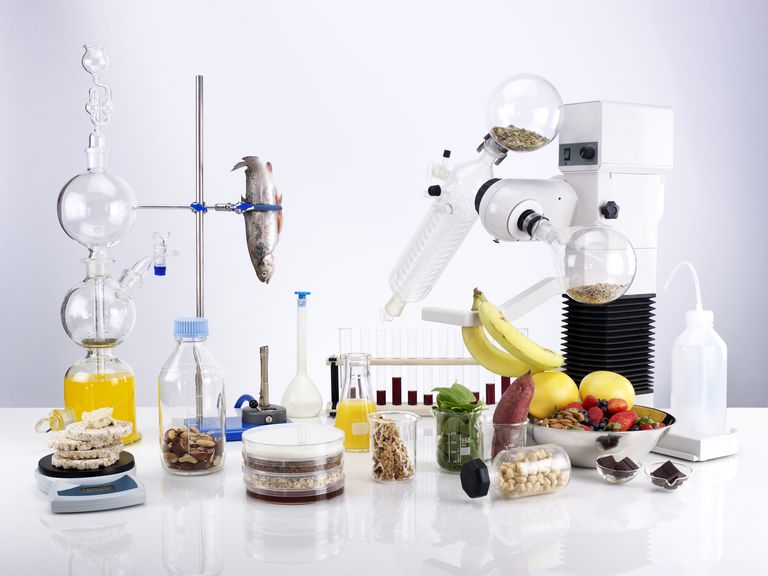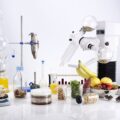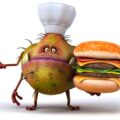The history of food chemistry dates back to the late 1700s, when many famous chemists were involved in discovering chemicals important in foods. In 1785, for example, Carl Wilhelm Scheele isolated malic acid from apples. In 1813, Sir Humphry Davy published the first book on agricultural and food chemistry, titled Elements of Agricultural Chemistry, in a Course of Lectures for the Board of Agriculture, in the United Kingdom. This book served as a foundation for the profession worldwide and went into a fifth edition.
In 1874, the Society of Public Analysts was formed, with the aim of applying analytical methods to benefit the public. Its early experiments were based on bread, milk, and wine. It was also out of concern for the quality of the food supply, mainly food adulteration and contamination issues stemming first from intentional contamination and proceeding later to chemical food additives by the 1950s. The development of colleges and universities worldwide, most notably in the United States, expanded food chemistry through research of dietary substances, most notably the single-grain experiment during 1907-11. Additional research by Harvey W. Wiley at the United States Department of Agriculture during the late nineteenth century played a key role in creation of the United States Food and Drug Administration in 1906. The American Chemical Society established their Agricultural and Food Chemistry Division in 1908, and the Institute of Food Technologists established their Food Chemistry Division in 1995.
What is Food Chemistry?
Food Chemistry involves the study of the chemical process of all biological and non-biological elements of food. Biological elements refer to things namely beer, milk, meat, lettuce, poultry and more. It is identical to the field of biochemistry and its elements such as proteins, lipids, and carbohydrates but also involves areas such as colors, flavors, water, minerals, vitamins, food enzymes and food additives.
Food chemistry includes how foods may change under the influence of various food processing technique and measures to prevent or reinforce it from happening. A general example for reinforcing would be fermentation of dairy products with microorganism wherein they are responsible for the conversion of lactose to lactic acid. Another example of food chemistry would be preventing a browning that is formed on an apple that has been chopped fresh by sprinkling lemon juice.
Components and Chemicals in Food
Chemicals in Food
Chemicals are essential building blocks for everything in the world. Chemicals in the food play very important role in everyone’s day to day life. Some components and chemicals in food are discussed below.
Carbohydrates
The most common type of carbohydrates used by humans is sucrose. Taking into the account of 80% of food consumed by a human along with 75% of the biological world contains carbohydrate. One of the basic interpretation of carbohydrates is monosaccharide consisting of characteristics of oxygen, hydrogen, and carbon. A polysaccharide is a chain of monosaccharide. Some of the examples include xanthan, pectin, agar, and dextran. The simplest example of a monosaccharide is glucose.
Water
Water forms one of the main components, comprising almost 95% of tomatoes, cabbage, and other vegetables, 75% in meat products. It makes a way for contamination of food and also helps in the growth of bacterias if not processed properly. This can be prevented by reducing the percentage of water present in the food for more self-life. Some of the methods include proper refrigeration, freezing, and dehydration.
Proteins
Proteins play a vital role in the functioning of a cell. It comprises of 50% of dry weight of a living cell when considered as average. It contains zinc, copper, iron, sulfur, oxygen, nitrogen, hydrogen and carbon. Source of proteins include legumes, meat, nuts, eggs, milk and green vegetables.
Vitamins
Vitamins are essential for a metabolic activity of a body. They are broken down into Vitamin E and Vitamin C as nutrients. Inadequate supply of vitamins would lead to diseases such as scurvy, anemia, and beriberi. An exuberance of vitamins would lead to vomiting, nausea and may also lead to death.
Food Additives
Food additives are materials that are added in food for improving appearance, taste and even to retain flavors. Some of them are naturally occurring flavors namely sugar and salt. But there are many other flavors that are created by chemists and methyl salicylate is one such example.
Food Color
Food color used to change the color of a food substance. There are naturally occurring as well artificially synthesized colors. One of the examples of a naturally occurring food color is caramel and the artificially synthesized food color is caramel coloring.
Enzymes
Enzymes are biochemical catalysts which are used in converting processes from one substance to another. Enzymes are also involved in decreasing the energy and time required to complete a chemical process. For the production of food products like dairy, fruit juices, beer, bread, etc. enzymes are used in the industries. Download Free Books On Food Chemistry Pdf





